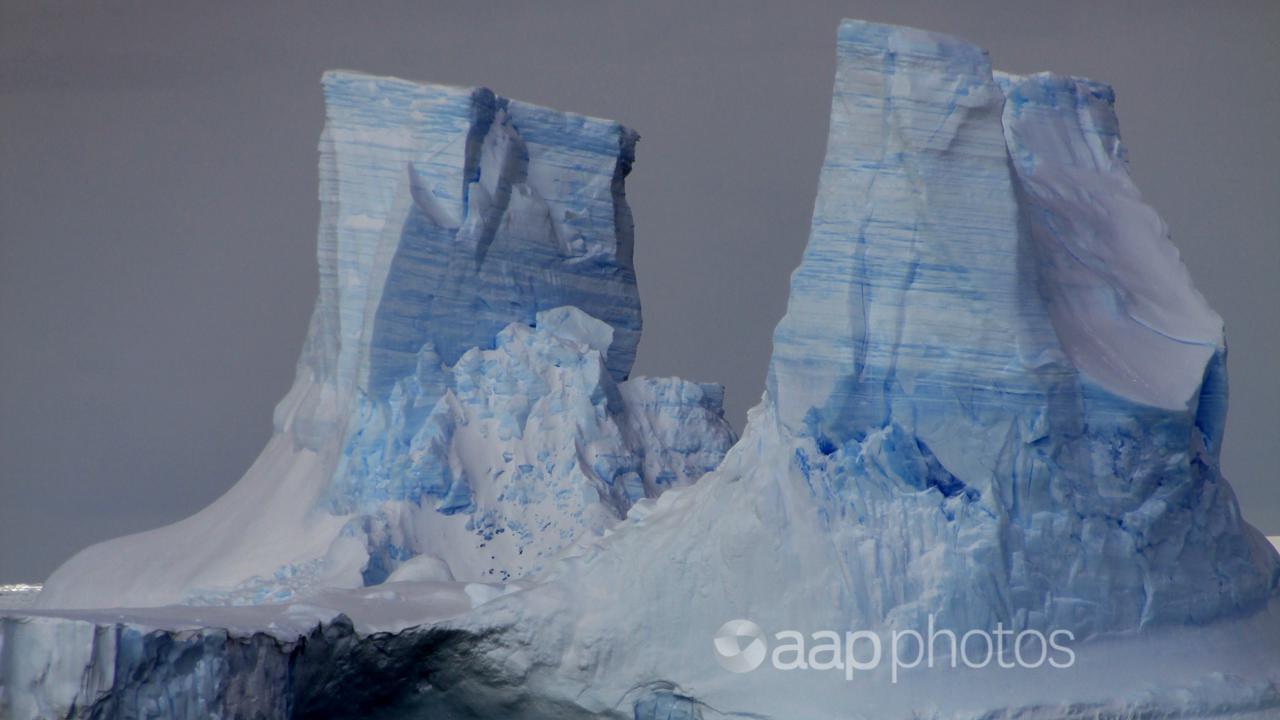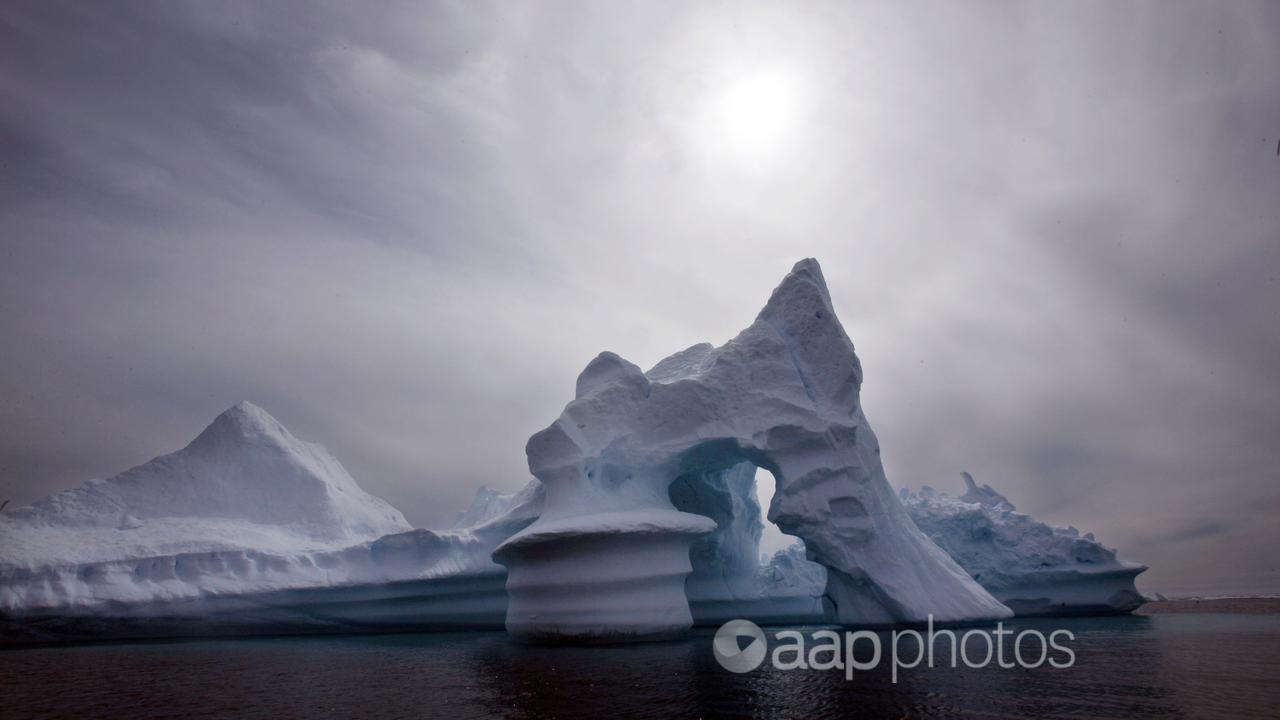A Facebook user has denounced “climate fraudsters” by claiming the second largest body of ice in the world is not reducing.
This is false. Experts told AAP FactCheck that Greenland’s ice mass balance is declining, losing about 223 billion tonnes per year.
In a July 27 post (archived here), the Facebook user states: “While the climate fraudsters obsess about every hot day, flood or drought they remain silent about everyone of their apocalyptic models/predictions that have failed, for example … Greenland ice mass balance shows no reduction.”
It is one of a number of climate related claims made in the post, which also includes a screenshot of a graph as evidence. The graph is courtesy of Polar Portal, a website where Danish research institutes upload results of their monitoring of the Greenland ice sheet.
However, the graph shows results for the surface mass balance of the Greenland ice sheet – not the overall mass balance as is referenced in the claim.
Surface mass balance is the difference between gains and losses on the ice sheet’s surface only. This is the difference between the amount of ice and snow that is gained through precipitation and what is lost due to melting, runoff and evaporation.
Dr Kenneth Mankoff, a senior scientist also at the National Geological Surveys for Denmark and Greenland (GEUS), said the surface mass balance taken in isolation is net positive.

However, Dr Mankoff warned it is “trending toward negative faster and faster.”
But surface mass balance is not the total measure of gains and losses on the Greenland ice sheet and is just one part of the overall equation.
The ice sheet loses mass through iceberg calving, glaciers melting from contact with ocean waters and basal melting.
Combining these additional losses with the surface mass balance gives the total mass balance for the Greenland ice sheet.
Dr Ruth Mottram, a senior climate scientist at the Danish Meteorological Institute (DMI), described the claim as “being deeply misleading and spreading misinformation that is far from the well-developed scientific understanding of this topic.”
“You can think of the mass budget as like a bank account – you pay money in and you take money out – in terms of a glacier or ice sheet, snowfall is like paying money in and melt and runoff is like spending money,” Dr Mottram told AAP FactCheck in an email.
“But we can also remove ice by calving icebergs and melting ice in the ocean. These processes are not included in the surface mass budget so using the (surface mass balance) curves on the Polar Portal to try to disprove global warming or even global sea level rise is deeply misleading.
“When you add these together with melt and snowfall we find that the total budget is negative – that is on average over a longer period Greenland is losing more ice than it gains.”
A 2019 study authored by experts involved in the Ice sheet Mass Balance Inter-comparison Exercise found that between 1992 and 2019, the Greenland ice sheet lost a total of 3.9 trillion tonnes of ice (page 4).
Another study, which reconstructed the ice mass balance from 1972 to 2018, found that mass loss has “increased sixfold since the 1980s” and Greenland has raised sea level by 13.7mm since 1972.
Other studies (here, here and here) also confirm that the Greenland ice sheet's mass balance has seen a significant reduction over recent decades.
Dr William Colgan, a research climatologist also at GEUS, told AAP FactCheck via email: "If you look at the annual Greenland mass balance estimates back to 1840 (figure 2)… you can see that the ice sheet hasn't had a period of sustained positive mass balance years since the early 1980s."
Martin Stendel, a climate scientist at the DMI, said daily volume data from the Programme for Monitoring of the Greenland Ice Sheet showed between September 1986 and August 2021, the average amount of ice lost each year was 152 billion tonnes, while between 2002 and 2021 the average was 223 billion tonnes (available via dataset).
Dr Mankoff said the gains and losses of the overall Greenland ice sheet are measured to determine how its melting contributes to sea level rise.
"We want to understand how the ice sheet responds to a warming ocean and a warming atmosphere … We want to understand what might happen to Antarctica in the future, or improve weather models used to forecast weather for Europe, or validate climate models."
The Verdict
The claim that the Greenland ice sheet mass balance has seen no reduction is false. The mass balance of the ice sheet has been consistently negative over recent decades.
The loss of ice through iceberg calving, glacier melting and basal melting far exceeds the gains made by ice and snowfall. On average, each year Greenland loses approximately 223 billion tonnes of ice.
False - The claim is inaccurate.
* AAP FactCheck is an accredited member of the International Fact-Checking Network. To keep up with our latest fact checks, follow us on Facebook, Twitter and Instagram.
All information, text and images included on the AAP Websites is for personal use only and may not be re-written, copied, re-sold or re-distributed, framed, linked, shared onto social media or otherwise used whether for compensation of any kind or not, unless you have the prior written permission of AAP. For more information, please refer to our standard terms and conditions.


















